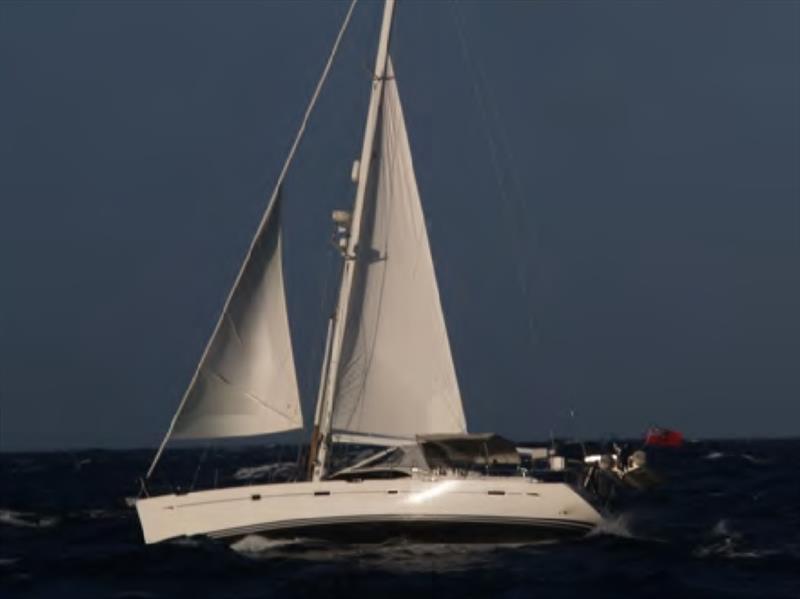
The Passage by Nigel Richards
by Nigel Richards / Island Cruising NZ 23 Jul 2019 22:10 UTC

BABE, an Oyster 54, revelling in the brisk conditions out of Opua © Island Cruising NZ
As I write this Varekai is lying to anchor in the beautifully picturesque atoll of Valuga (Falunga), in the Southern islands of the Lau group of Fiji. All talk and discussions about departure dates, passage planning and management held in the cruisers lounge of the Bay of Islands Marina already a distant memory.
However, as always I want to revisit our discussions for the benefit of those not there and of course the wonderful thing of hindsight for those that were part of the fleet debates.
The planned departure date for this years' Pacific Circuit Rally was the 20th May. We actually cast off the lines and left Opua on the 28th. Why the delay you ask? Cast your minds back to late May and recall how the weather patterns were passing over Northern New Zealand and the state of the weather in the tropics at the time.
Although the sea temperatures cond in the South West Pacific sailing area were starting to drop, there was a spike in those temperatures around the time of our departure that contributed to an MJO cycle. This produced conditions favourable for tropical low development. In fact there was a period of time through the week where the Hawaiian Hurricane Centre were predicting cyclone development within the next 24 hours. Not the time to embark on a passage north from New Zealand.
Interestingly enough, the week previously had seen a large exodus of yachts heading north on what looked like the perfect run, only for them to be held up at Minerva for a number of days by a strong squash zone between there and Tonga. The route to Fiji remained doable due to the less tight wind angle, once the risk of significant convection had passed.
As the condition in the north started to stabilise, the low pressures moving from west to east across New Zealand's North Island hotted up into a procession; depressions passing over every three or so days. With daily temperatures steadily dropping, the winter weather cycle was starting to set in with deepening troughs and stronger winds. Therefore getting the timing required for a departure right became more challenging. Picking a frontal band to scurry away from New Zealand on, fast enough to get north in time to avoid the teeth of the next low became the topic of debate.
The low pressure system that passed over Northern New Zealand over the 26th-27th May produced forecasted winds around the twenty mark with gusts a little higher. Our plan was to leave Opua as the wind went through north and head NNE to aim to encounter the next front as far north as possible. With a plan to achieve 150nm per day, motor-sailing if needed, the distance north should be sufficient to meet that goal. All in all, a marginal window to achieve the departure that week. After a good discussion of tactics, including crew and boat capabilities, the skippers made the call to go. Some planned to head out early and take the wind before it passed through the north, for that extra mileage but most waited until Coast Guard Nowcasting Cape Reinga weather station reported a west of north move in the wind.
Varekai departed at 1210, just as that wind change took place. Passing the Nine Pin we experienced 20 to 25 knots North by West, gradually backing as we left the cover of the land. Three of the fleet had to return to Opua with a range of issues; a split mainsail, hydraulic steering problem and one with water in the boat (we will let him tell you about that one). All left within a few days to catch up. Unfortunately one boat had a major rig related failure later in the trip which ultimately caused them to be airlifted from the boat off Great Barrier. This was after a fantastically well managed jury rigged return by the skipper. Full credit to the skipper and crew of Squander.
How did our passage pan out? The remainder of the front fell away to the south east and we saw the wind back and drop over the first 12 hours to WNW 18 knots. It stayed there for the next 12 hours then back again to WSW 5 to 10, when the Gardner was called in to help maintain our planned 150nm per day. After a day or so of variable light winds it filled in from the NW again in the 15 to 18 knot range, allowing us to dispense with mechanical means and go back to wind power in the 7.5 to 8.5 knot boat speed range. We kept a watchful eye on the PredictWind weather GRIB's to ensure our track kept us in front of the next low.
As you can see by the PredictWind screen shots, that's what we did. A steady wind, always in the northern quadrant, provided the easting we needed. In fact this year the passage took us to within 60nm of Raoul Island on the Kermadec ridge, before the westerly change allowed us to head north. This saw us pass close to Ata Island, south of Tongatapu, then onto the Piha Channel and the back door to Pangaimotu Island. 1095nm at average of 6.6 knots, six days, 21 hours. Nice!